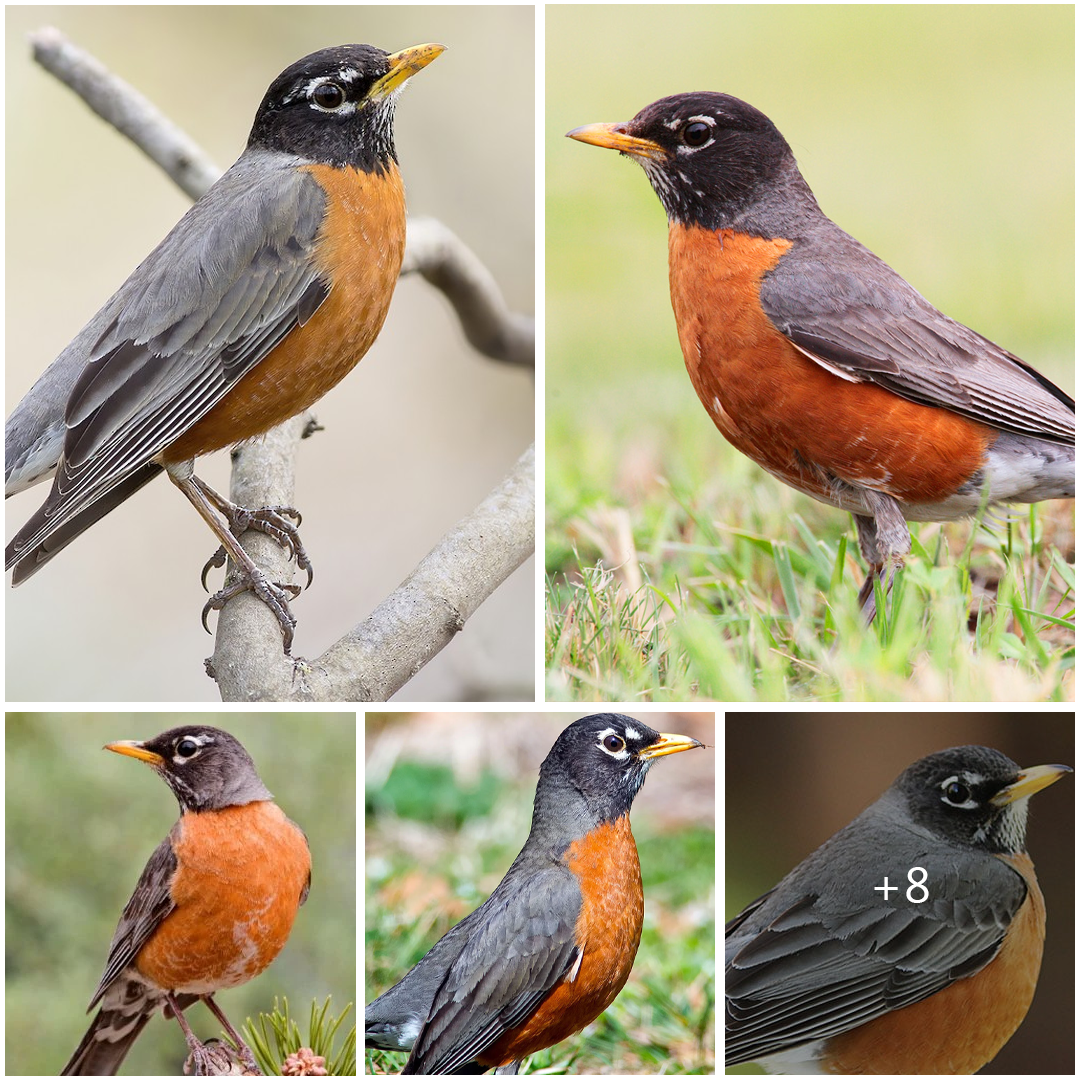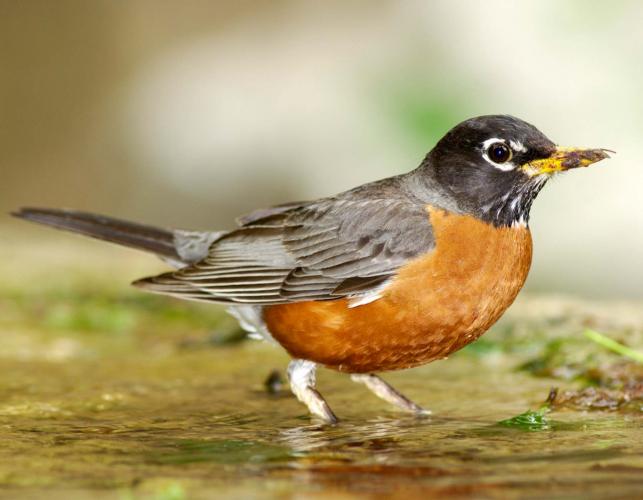
The American Robin: Symbol of Spring’s Arrival
As winter’s chill begins to wane and the days grow longer, a familiar song fills the air, heralding the arrival of spring. It is the melodious call of the American robin, a beloved harbinger of the changing seasons in North America. With its vibrant red breast and cheerful demeanor, the American robin holds a special place in the hearts of nature enthusiasts and birdwatchers alike. Let’s explore the beauty and significance of this iconic bird.
Appearance and Identification
The American robin (Turdus migratorius) is a medium-sized songbird known for its distinctive appearance and melodic song. Sporting a rusty orange breast, gray back, and white markings on its throat and belly, the robin is easily recognizable even from a distance. Its long legs and slender body are well-adapted for hopping along the ground in search of food, while its sharp beak is perfectly suited for capturing insects, worms, and berries.
Habitat and Distribution
Found throughout North America, from Canada to Mexico, the American robin is a highly adaptable species that thrives in a variety of habitats, including forests, grasslands, parks, and suburban neighborhoods. During the breeding season, robins prefer open woodlands and areas with ample vegetation for nesting, while in the winter months, they may congregate in large flocks in search of food.

Behavior and Diet
One of the most recognizable behaviors of the American robin is its habit of hopping along the ground in search of food. These birds are primarily insectivorous, feeding on earthworms, beetles, caterpillars, and other invertebrates found in the soil. However, they also have a fondness for fruit, especially berries, which they consume eagerly during the summer and fall months. Robins are skilled hunters, using their keen eyesight and sharp beaks to locate and capture prey with precision.
Breeding and Nesting
In early spring, male robins return to their breeding territories and begin to sing to attract mates. Once paired, the female robin builds a cup-shaped nest out of grass, twigs, and mud, often lining it with softer materials such as feathers and fine grasses. Nesting sites vary but may include trees, shrubs, ledges, or even man-made structures such as window ledges and porch lights. The female typically lays 3-5 pale blue eggs, which she incubates for about two weeks before they hatch into helpless chicks.
Cultural Significance
The American robin holds a special place in American culture as a symbol of spring and renewal. Its appearance is often associated with the changing seasons, and its cheerful song is considered a welcome sign of warmer weather to come. In addition to its cultural significance, the American robin plays an important ecological role as a seed disperser and insect predator, helping to maintain the balance of ecosystems across its range.
Conclusion
As a harbinger of spring and a symbol of renewal, the American robin occupies a cherished place in the hearts and minds of people throughout North America. With its vibrant plumage, melodious song, and vital ecological role, this iconic bird serves as a reminder of the beauty and resilience of the natural world. As we celebrate the return of the American robin each year, let us also renew our commitment to protecting the habitats and ecosystems that sustain this beloved species for generations to come.





